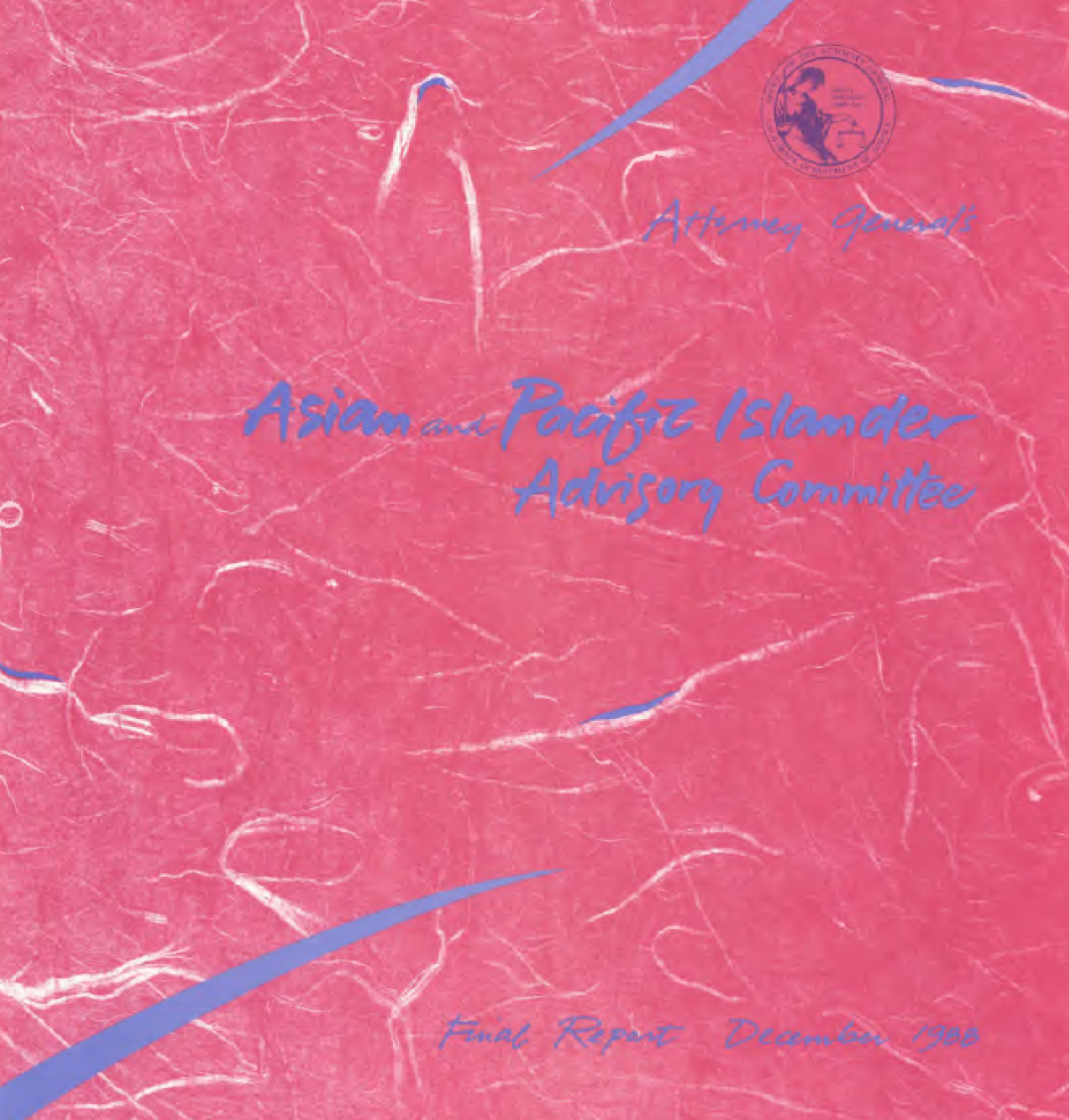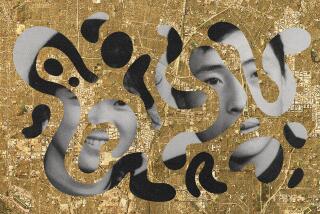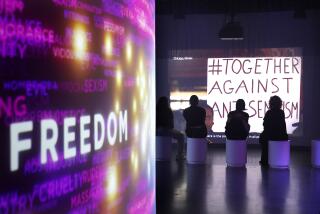They warned about rising anti-Asian hate 32 years ago. Californians ignored them

- Share via
In the early 1980s, Japanese American Citizens League national director Ron Wakabayashi asked members of the civil rights group to send him any newspaper clippings of anti-Asian hate crimes they might find.
His collection quickly numbered in the hundreds.
Vietnamese fishermen in the Gulf of Mexico who had their boats burned by white competitors. College students beaten. Immigrants murdered. Cross burnings. Slashed tires. Slurs flung with impunity.
“Hate crimes were just surfacing as a concept,” said Wakabayashi, the former head of the L.A. County Human Relations Committee who’s now 78 and retired.
“It was an epidemic,” remembered Dale Minami, 74, an attorney most famous for representing Japanese American civil rights icon Fred Korematsu. “The torrent of racism just overflowed.”
Wakabayashi, Minami, and others decided to publicize the problem. Congressman Norman Mineta (D-San Jose) distributed copies of the hate clippings across Capitol Hill. Coalitions formed to demonstrate and plead with law enforcement and elected officials to believe that anti-Asian crimes were on the rise and to do something about it.
When nothing happened, the activists then went to California Atty. Gen. John Van de Kamp. They persuaded him to create and fund a commission to study the rise in anti-Asian sentiments in California that had always existed but were now exacerbated by a growing population and economic competition from the Pacific Rim.
With Minami as chair, Wakabayashi used his deep Rolodex to build the Asian and Pacific Islander’s Advisory Commission in 1988 with voices across ethnic, occupational, and generational lines. They held four public forums and met as a group to discuss their findings. A year after the commission formed, they released a 129-page report at a press conference with Van de Kamp that laid out the painful history of anti-Asian hate in the state, along with recommendations to remedy it.
The press and political establishment largely ignored the commission’s findings. Two weeks later, a gunman stormed an elementary school in Stockton and killed five children, all of them of Southeast Asian descent.
“There was a sense of urgency to educate the public as soon as possible,” Minami said. “We needed to stop this stuff. And sure enough, it happened again.”
The report remains such an unknown part of California Asian American history that State Sen. Richard Pan (D-Sacramento), chair of the California Asian Pacific Islander Legislative Caucus, asked me for a copy so he could read it when we talked about the matter. When I explained its contents, I heard the weariness in his voice.
“Clearly, that document is another piece of evidence that the problems that we’re dealing with now is certainly nothing new,” Pan said. “The fact that there’s so many things in this document that we’re looking at now, that says ‘Geez, that sounds very familiar’ — not because of what happened in the ‘80s but because what’s happening now. We can’t forget again.”

A rereading of the advisory committee’s report in the wake of the March 16 killing of eight people in Atlanta-area spas — six of them Korean and Chinese women — reminds me of that old cliché: the more things change, the more they remain the same.
It detailed the struggles of Asians and Pacific Islanders in California from Gold Rush-era lynchings up to problems that the Monterey Park police department had with reaching a then-ascendant Chinese community. There were anecdotes, statistics, explainers and even photos and comics to back up its assertions.
“The danger is that we will relive the racial conflict and anti-Asian violence which has been California’s historical legacy to us,” Minami wrote in an introductory letter to Van de Kamp. “The challenge is to create a model of tolerance in diversity: a new California.”
Minami joked to me that he thought dealing with all 29 members of the commission “would be like wrangling cats because it was so many, but people were very much on the same page.” He praised Van de Kamp for giving them “a blank check, an open ticket, for a total view of the situation.”
“Most of the group was privately skeptical” anything would happen, Wakabayashi said. “But there wasn’t much choice. We had to do something. To be an Asian-Pacific Islander was to be invisible.”
The report concluded with 38 recommendations to state leaders that they felt would address anti-Asian violence.
Some — the tracking of hate crime statistics by law enforcement agencies, a push for better counting of Asian Americans during the census — were quickly adopted. Others — like support of bilingual education and affirmative action programs — were banned by California voters in the 1990s via propositions. Still others, like a suggestion that high schools “encourage” ethnic studies in K-12 schools to properly place Asians and Pacific Islanders within the California story, are being debated to this day.
But the vast majority of recommendations went nowhere after the Stockton massacre. Van de Kamp focused on lobbying against the manufacture and sale of assault weapons. Commission members soon pressed him to study whether that tragedy was motivated by hate, which Van de Kamp’s office concluded it did in the fall of 1989.
By then, he was about to launch an unsuccessful run for the California governor’s office. Asian activists then focused their attention on opposing his eventual successor as attorney general, Dan Lungren, because he had opposed financial reparations to Japanese Americans who were incarcerated during World War II.
The advisory commission report went into the proverbial dustbin of the past.
“I have to put that on us,” Minami admitted. “We could’ve done more. We could’ve lobbied for a follow-up report. But Lungren had no interest in that, and we had no interest in working with him.”
Barbara Takei, the report’s lead writer and researcher, is more forgiving.
“The work of social change, the foundation of the report’s message, requires persistence and tenacity — a lifetime of incremental work that does not necessarily provide the drama that attracts media attention,” she said. “While the committee’s existence was brief, members continued a lifetime of work, many as ‘shadow warriors,’ not seeking notoriety or publicity in pressing for social change.”
Both Minami and Wakabayashi are upset that their findings from a generation ago remain relevant.
“The situation is worse,” said Minami. “It’s appalling to me that we have not made more progress. I’m just saddened by this moment.”
“The lesson of the report is you gotta seize the moment, before the news cycle ends, or it will be forgotten about,” Wakabayashi said.
But he also points out that this current moment of anti-Asian hate also is happening in an era far different from the 1980s. Now, Asian Americans and Pacific Islanders make up a bigger portion of California’s population, and exist across positions of power from government to the grassroots like never before.
“This generation has the horsepower to push back more than we ever did,” Wakabayashi said. “I’m hopeful.”
More to Read
Sign up for Essential California
The most important California stories and recommendations in your inbox every morning.
You may occasionally receive promotional content from the Los Angeles Times.














![Vista, California-Apri 2, 2025-Hours after undergoing dental surgery a 9-year-old girl was found unresponsive in her home, officials are investigating what caused her death. On March 18, Silvanna Moreno was placed under anesthesia for a dental surgery at Dreamtime Dentistry, a dental facility that "strive[s] to be the premier office for sedation dentistry in Vitsa, CA. (Google Maps)](https://ca-times.brightspotcdn.com/dims4/default/07a58b2/2147483647/strip/true/crop/2016x1344+29+0/resize/840x560!/quality/75/?url=https%3A%2F%2Fcalifornia-times-brightspot.s3.amazonaws.com%2F78%2Ffd%2F9bbf9b62489fa209f9c67df2e472%2Fla-me-dreamtime-dentist-01.jpg)